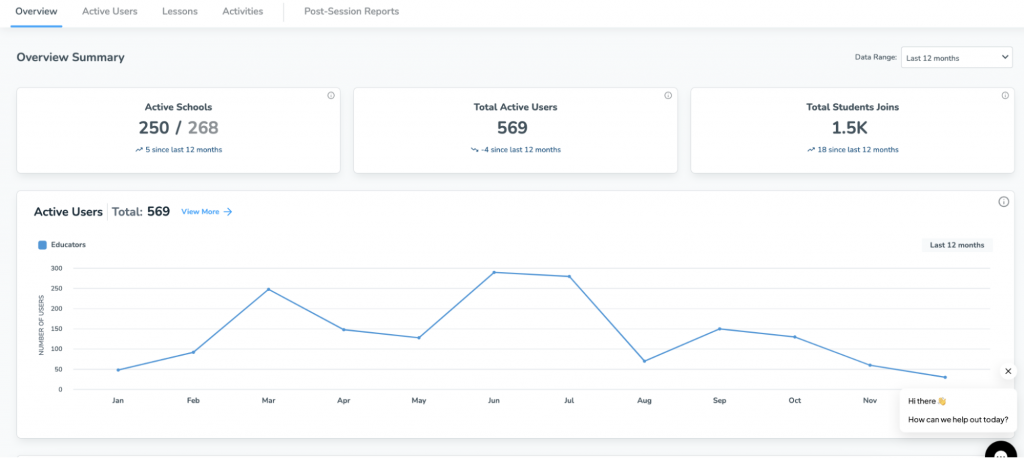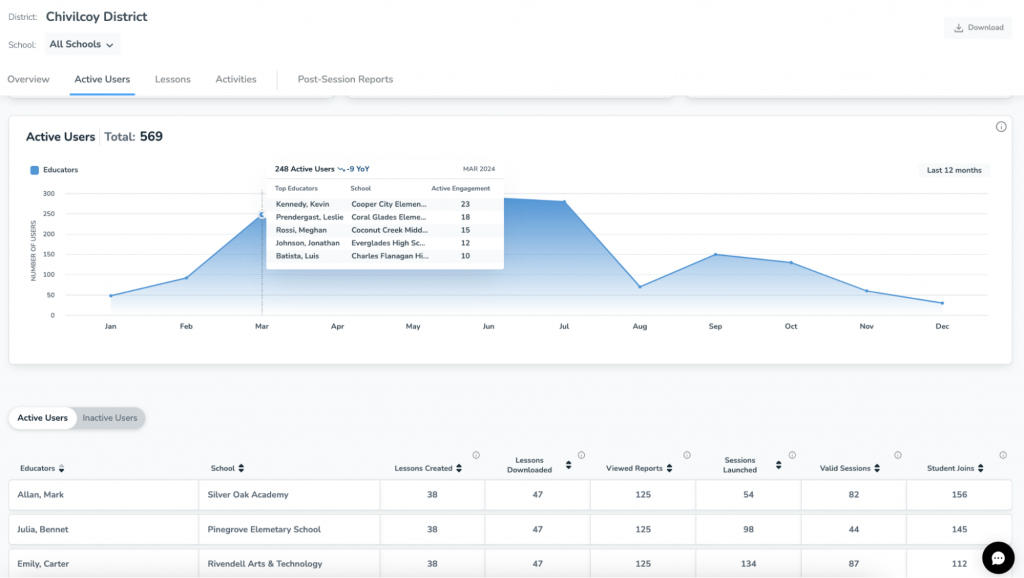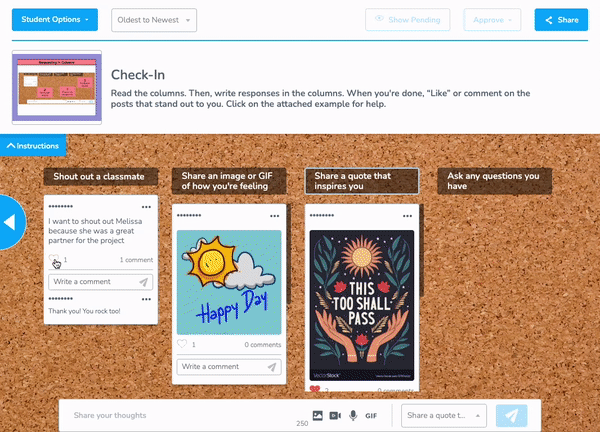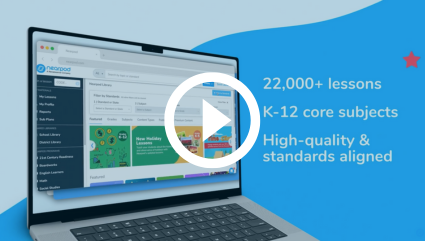
A School’s Guide to Successful Nearpod Implementation
You’ve made the decision—Nearpod is now part of your school or district’s instructional toolkit. The next challenge? Ensuring your educators know how to use it, love using it, and keep using it all year long.
Whether you’re a district leader, principal, or instructional coach, the way you implement Nearpod after adoption determines whether it becomes a powerful part of your school culture or an unused icon on the toolbar. This guide offers five proven strategies to boost adoption, inspire your educators, and ensure your investment in Nearpod pays off.
Why Successful Edtech Implementation Matters
Adopting an edtech platform like Nearpod isn’t just about rolling out a new tool—it’s about changing the way teaching and learning happen in your classrooms. That shift takes intentional planning, consistent support, and a clear connection to your school or district goals.
When implementation is strong:
- Teachers feel confident and motivated to use the tool.
- Students get engaging, interactive learning experiences.
- Leaders can see a clear return on their investment in the form of improved engagement and outcomes.
Without a thoughtful plan, usage can drop off after initial excitement, leaving valuable tools underutilized. With the right approach, Nearpod can become an everyday resource that supports personalized learning, streamlines instruction, and helps achieve measurable schoolwide goals.
We recommend talking to your Nearpod representative to develop a sustainable implementation plan that works for your school or district.
A School’s Guide to Successful Nearpod Implementation
1. Track and Act on Usage Data
Usage data is more than a scorecard—it’s an early indicator of how well Nearpod is taking root in classrooms. Regularly reviewing Admin Reports helps you spot where usage is high and where it needs a boost. This lets you celebrate early adopters, identify where targeted PD could help, and ensure Nearpod supports your broader instructional goals.
When you promote a data-driven school culture by connecting data with your district’s priorities—like engagement, formative assessment, or differentiated instruction—teachers will understand that Nearpod is valued at every level. By keeping an eye on usage trends and taking action, you’ll keep adoption strong and aligned with what matters most.
How to leverage your data:
- Identify high-usage teachers and invite them to share best practices.
- Explore grade-level or subject-area trends to target support where needed.
- Use data insights to plan contests or mid-year adoption pushes.
Example: If you notice a spike in usage in 4th-grade math but low adoption in middle school science, you can plan targeted PD sessions, share relevant Nearpod lessons from your library, or connect teachers for peer mentoring.
2. Build and Curate a Shared Library
A shared school or district library turns Nearpod from an individual tool into a collective resource. When you organize lessons by grade, subject, or initiative, you save teachers time and ensure everyone has access to best-in-class materials aligned with your goals. Regular updates keep content relevant and support ongoing instructional alignment.
This approach fuels collaboration, enabling educators to share successes and discover new strategies together. A culture of sharing helps everyone—from new hires to experienced staff—feel supported and ready to engage students.
How to manage a shared library:
- Organize by grade, subject, or initiative for easy navigation.
- Include both custom-created lessons and Nearpod’s ready-to-use content.
- Update regularly with seasonal content or lessons tied to curriculum pacing.
Example: A district library could include a “Back-to-School” folder with icebreaker activities, an “Assessment Strategies” folder with formative check-ins, and a “State Test Prep” folder aligned to local standards.
3. Make Professional Learning Ongoing, Not One-and-Done
Initial onboarding is just the beginning—teachers need time to explore, practice, and revisit Nearpod’s features as their needs evolve. Meaningful PD makes all the difference in turning Nearpod into a daily habit. Ongoing, bite-sized learning opportunities help teachers deepen their skills, discover new features, and feel confident trying new things. When leaders invest in continuous PD, it shows that teacher growth is valued and that Nearpod is worth mastering.
How to support ongoing learning:
- Share the Beginner’s Guide to Nearpod for practical tips—even for experienced users.
- Dedicate short segments of staff meetings to a “Nearpod spotlight.”
- Host informal “Appy Hours” for exploration and collaboration.
- Share Nearpod blogs, videos, and webinars in weekly communications.
- Encourage participation in Camp Engage or certification programs.
Example: One school held a monthly “Nearpod Challenge,” where teachers tried a new feature (like Collaborate Board) and shared their experiences at the next staff meeting.
4. Align Nearpod with Instructional Goals
Strong adoption sticks when Nearpod is clearly tied to your educational priorities. Embedding it in curriculum maps, PLCs, or MTSS strategies makes it a tool for achieving real instructional outcomes. When every teacher knows how Nearpod drives the goals you care about, daily use becomes second nature.
How to integrate Nearpod into your vision:
- Discuss instructional alignment with coaches or your Nearpod rep.
- Incorporate Nearpod in planning meetings and instructional frameworks.
- Point out connections between key features and your district initiatives.
5. Create Opportunities for Peer Learning and Support
Peer support is the heartbeat of successful adoption. Teachers are more likely to try something new if they see colleagues succeeding with it. Seeing Nearpod in action in a colleague’s classroom can be the most powerful motivator for adoption. Building pathways for teachers to observe, share, and celebrate effective Nearpod use accelerates learning, helps build a supportive professional community, and boosts teacher motivation.
How to encourage peer learning:
- Arrange classroom visits so teachers can observe a Nearpod lesson in action.
- Create a Collaborate Board where staff can share lesson links, tips, and feature ideas.
- Recognize and celebrate educators who try new strategies or integrate Nearpod into their units.
Example: A district spotlighted a “Nearpod Innovator of the Month,” featuring the teacher’s favorite lesson and tips in the staff newsletter.
6. Inspire Engagement with Contests and Milestones
Healthy competition and recognition keep Nearpod top of mind. Celebrating milestones and hosting friendly contests motivates teachers to experiment and build new routines, while also encouraging a positive school culture. These efforts reinforce that Nearpod is part of your core culture, not just another tech tool.
How to celebrate:
- Share milestones like “1,000 Nearpod sessions completed” on social media.
- Run usage contests with small rewards or schoolwide shoutouts.
- Showcase student work created in Nearpod at family nights or board meetings.
- Share big wins and creative uses in newsletters or meetings.
Example: A principal shared screenshots of student Collaborate Boards at the next all-staff meeting, highlighting the creativity and engagement happening in classrooms.
7. Leverage Student Voice and Choice with Nearpod
Sustaining adoption isn’t just about staff buy-in—bringing students into the conversation can fuel interest and continuous usage. Giving students agency in how Nearpod is used empowers them, promotes deeper engagement, and provides real-world feedback for your instructional strategies.
How to amplify student voice:
- Use features like Collaborate Board, Open-Ended Questions, or even student-created lessons to gather their perspectives and showcase ownership.
- Regularly survey students through Nearpod polls about their learning experience and share these insights with your team to spark instructional improvements.
- Encourage teachers to let students suggest lesson topics or question types for formative assessment, then design Nearpod activities together.
8. Keep the Momentum Going
Sustained adoption takes ongoing attention. Checking in on usage, celebrating growth, and supporting teachers through roadblocks reinforces the notion that Nearpod isn’t just a project—it’s a pillar of your instructional culture. Make it a habit to revisit your dashboards, listen to staff feedback, and adjust your strategies as your community grows with Nearpod.
With focus and collaboration, Nearpod will become a trusted part of every classroom—helping your teachers and students thrive all year long.
Start Building Your Implementation Plan
A strong Nearpod implementation goes beyond first-year enthusiasm—it’s built through collaboration, ongoing learning, and championing teacher leaders. By weaving these strategies into your culture, you’ll empower educators, engage students, and ensure Nearpod remains a dynamic driver of instructional success year after year.
Ready to maximize your Nearpod investment? Talk to your Nearpod representative today!

Bridget McKnight is a Product Marketing Manager at Nearpod.





